
Hot, Dry, and Not Dull at All
June 4, 2006
| Other places got rain this past week, but we had only one brief (and welcome) shower. Even as it dries up, the land and its inhabitants continue to display interest and beauty...and also mystery. | |
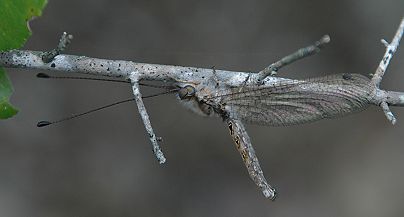 |
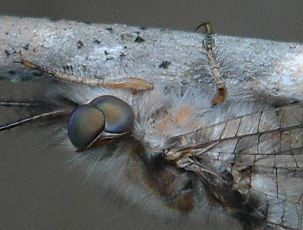 |
| This insect, for instance, was pretending to be a twig...but looks like a cross between a dragonfly and a butterfly (note the long, clubbed antennae.) It's actually an Owlfly, in the genus Ululodes, and it's related to lacewings and ant lions ...I would never have guessed that. | Its eyes are even stranger than the rest of it--each eye looks like an overlapping of two compound eyes |
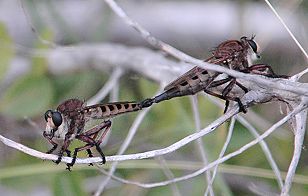 |
|
| From online sources I've learned that Texas has an abundance of robber fly species, especially in the genus Promachus which is what these two are. When disturbed while mating, they try to fly away in this configuration, with great difficulty. And look at that face! | |
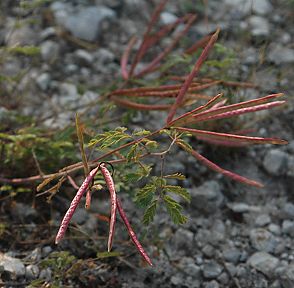 |
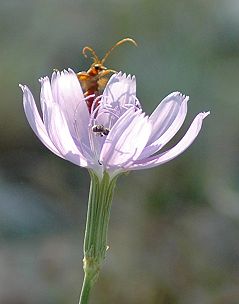 |
| Before the seedpods develop, this low-growing, lacy-leafed legume looks a lot like Illinois bundleflower, which we also have...or like a cream-flowered sensitive briar (instead of the usual pink puffballs). But instead of tightly whorled seedpods, or yellow seedpods, it produces these lovely rosy-pink ones that glow in the sun. | The skeleton plant has few if any leaves, a stiff single stalk and one ro three flowers on top...most commonly just one. They're delicate, lavender, and seem to hold the light. In this case, the flower is inhabited already when a wasp comes for its share of nectar. |
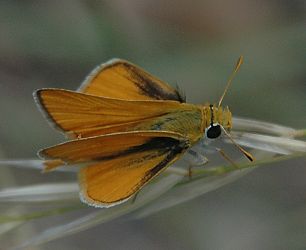 |
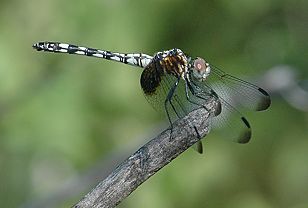 |
| Hardly as big as my thumbnail, the orange skipperling, Copaeodes aurantica, flits around just above the ground and finally settles (briefly) on grass. This shot was taken on a cloudy morning--that orange is really bright. | Though I don't have confirmation from an expert yet, I am fairly sure this is a female Checkered Setwing, Dythemis fugax. My books say that the face of females is "olivaceous" and this is clearly white, but there's a picture on Odonata Central of a female from Brewester County with a white face, and more white on the abdomen, just like this one |
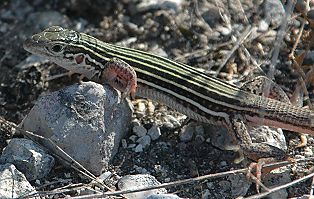 |
|
| I've tried for years to get a good picture of a prairie racerunner, Cnemidophorus sexlineatus viridis, and finally one held still long enough. They're closely related to the spotted whiptail that I had on the page a few weeks ago, but they're even more slender, and they're much more jittery, usually taking off fast to dive under a cactus or other cover. They're green with lighter stripes on the body, and the tail is pinkish, increasingly so at the tip. | |
![]()

